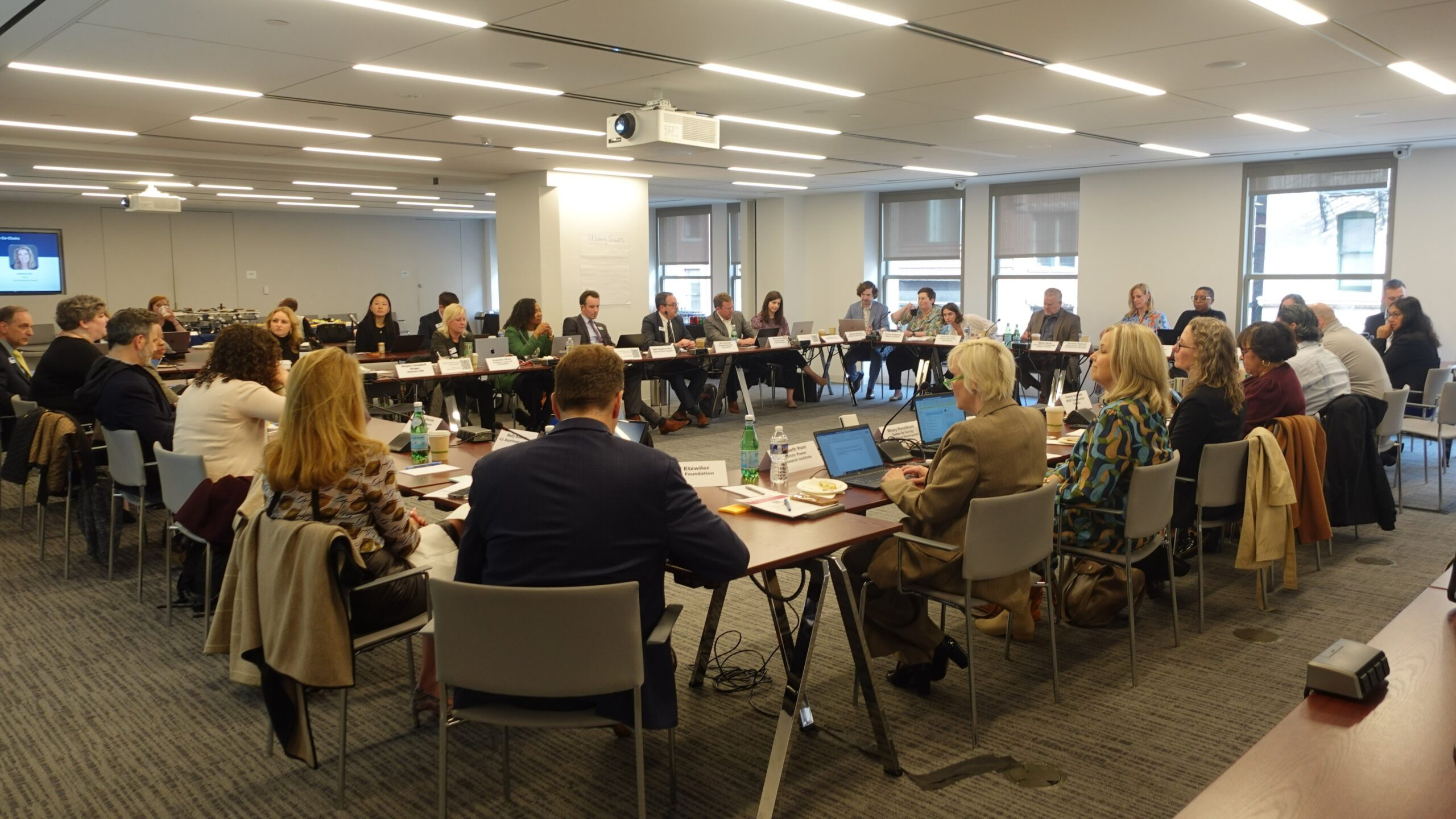The health, safety, and economic security of our communities and businesses are highly dependent on a reliable supply of energy—including electricity, natural gas, and liquid fuels. When the lights go out or the fuel stops flowing, societal and economic impacts are immediate and can cascade over time. As states increasingly face a wide range of threats to energy systems—including storms, natural disasters, physical attacks, and cybersecurity threats—Governors are preparing to quickly respond to those emergencies, coordinate recovery, and facilitate energy restoration.

An energy emergency can occur on day one of a Governor or Utility Regulator’s terms — and those leaders are crucial to their state’s response and recovery from energy emergencies. With this in mind, the National Governors Association (NGA) and National Association of Regulatory Utility Commissioners (NARUC), with support from the U.S. Department of Energy Office of Cybersecurity, Energy Security, and Emergency Response (DOE CESER), hosted a three-day training in Kansas City, Missouri, to prepare state leaders for the eventuality of a major energy disruption. Over 75 attendees, including Governors’ staff, utility regulators, senior commission staff, and other senior state officials representing nearly 25 states and the District of Columbia, participated in the training. This training provided a diverse array of state leaders with the knowledge and tools they need to coordinate with federal, local, and energy sector partners, communicate with constituents, and guide their states from disaster to recovery and restoration.
To contextualize the event, the energy security training kicked off with a joint, unclassified briefing from the Electricity Information Sharing and Analysis Center (E-ISAC) and the Downstream Natural Gas Information Sharing and Analysis Center (DNG-ISAC). Together, the briefers provided a broad overview of the physical and cyber threats facing the energy sector. This briefing was centered around preparing meeting attendees to better understand how government agencies and private industry detect, monitor, and respond to emerging threats in the energy sector.
Following the unclassified threat briefing and a brief welcome from NGA and NARUC hosts, William Fehrman, President and Chief Executive Officer of Berkshire Hathaway Energy, welcomed attendees on behalf of the energy sector and shared opening comments. In his remarks, Mr. Fehrman contextualized threats to energy infrastructure and emphasized the importance of energy security and resilience to states, territories, communities, and industry, touching on the ample opportunities to leverage public-private collaboration to improve preparedness and accelerate response.
Over the three days of the energy security training, participants took part in 15 topical discussions with experts and state action planning sessions. In all, participants heard from speakers that spanned roles and organizations responsible for energy emergency response. These included state energy, homeland security, cybersecurity, and emergency response leaders, federal partners from the U.S. Department of Energy (DOE) and the Federal Emergency Management Administration (FEMA), and leaders from the electric and natural gas sectors. Over the course of the event, several interconnected themes emerged as key to effectively responding to and recovering from an energy disruption event. Governors, as heads of the Executive Branch, are key in rapidly and effectively responding to energy disruption events. While response efforts in an emergency are often distributed across several state entities, these ultimately answer to the Governor. As such, Governors and their staff play a primary role in coordinating response, sharing information, and effectively communicating with the public.
When an emergency occurs, Governors have a wide range of authorities and tools at their disposal to facilitate and expedite outage response and restoration. From emergency declarations to regulatory waiver requests, resource allocation to public communications, Governors are empowered to make rapid decisions to respond to emergencies. Panelists described these roles in depth and reminded state leaders to carefully study these authorities in advance of an emergency and be prepared to deploy them when needed. This ties in closely with effective information sharing. Like state governments, the federal government and the private sector possess resources and response capabilities. Sharing information before an energy emergency can help all parties track and monitor threats, while sharing information during an energy disruption allows all parties to leverage each other’s resources to prioritize and speed up response times.

Energy emergencies are complex, and often widespread events. State responders need to ensure they have effective, secure lines of communication with the energy sector, federal, and local partners in order to prioritize and coordinate energy emergency response and restoration. Shauna Sanford, Assistant Deputy Chief of Staff to Governor Edwards of Louisiana, and Michelle Hindmarch, Acting Director of Communications for DOE CESER, provided successful examples of early incident coordination and discussed information sharing mechanisms and approaches that state leaders can implement. These examples can be particularly useful in helping state officials effectively communicate with the public. During times of crisis, the public naturally looks to state governments for information, reassurance, and aid. Failure to communicate effectively with the public can place citizens at risk, hamper state response efforts, and ultimately erode trust in the government as an institution.
Other important topics covered in the training included planning for long-duration outages, addressing the needs of vulnerable populations during an energy emergency—including the elderly, rural communities, and other vulnerable populations — and the importance of the unity of messaging in a crisis. Governors are well-situated to understand the unique needs of their states and how to build response capacity within vulnerable communities.
Three key action steps emerged for state officials to emphasize as they return to their states: 1) state planning, 2) relationship building between parties, 3) emergency exercising. Taken together, these three actions will help Governors and their staff take stock of their resources, build rapport across the energy and government sectors, and test their response approaches during simulated emergencies.
States have produced comprehensive state energy plans for decades. However, the passage of the Infrastructure Investment and Jobs Act of 2021 has reinvigorated state energy planning by tying formula funds to updated plans for the evolving threat environment, developing risk assessment mechanisms, and hitting key planning milestones. Panelists Campbell Delahoyde (National Association of State Energy Officials), Ben Bolton (Tennessee State Energy Office), and Megan Levy (DOE CESER) discussed the importance of state energy planning, described federal funding opportunities, and shared anecdotes on the role state energy plans have played in disasters that have affected states.
Energy emergencies can be widespread, complex, and longlasting. Effectively responding to an energy emergency requires the cooperation of disparate stakeholders. Governors, state energy staff and emergency responders, law enforcement agencies, and private utilities all have roles to play in an emergency. These roles require significant trust between the public and private sectors. This trust must be built up both between organizations and individuals before an emergency takes place. Speakers and panelists from the public and private sectors stressed the importance of not only understanding your specific role in emergency response and recovery but also taking the time to build relationships with peers across the response effort.
Once an energy security plan is drafted and underpinned by strong relationships, speakers and panelists next encouraged attendees to test these systems through simulated exercises. Simulated exercises during the “blue sky” period can test the limits of a state’s or territory’s response and recovery capabilities. Insight gained from exercising can help states rework and improve their response plans and procedures. Additionally, bringing in partners from other agencies and the private sector is the perfect opportunity to build and strengthen relationships. Virginia State Coordinator of Emergency Management Shawn Talmadge presented on a recent cyber-threat exercise Virginia held in coordination with Dominion Energy and explained how the collaboration allowed both entities to identify vulnerabilities, improve their systems, and build trust. While many states and sectors regularly hold exercises, the North American Electric Reliability Corporation also hosts a large-scale biennial event called Grid-Ex. During Grid-Ex exercises, participating states, agencies, and utilities respond to a pre-scripted set of scenarios to test their ability to engage with complex and evolving threats.
In order to allow participants to think through what improved energy security looks like for their states, two days of the training concluded with State Action Planning. These Action Planning sessions served as a facilitated discussion with guided questions to assist state officials in crafting and planning new solutions based on their states’ specific risk profiles in order to meet their states’ energy security goals.
This article was developed by Chris Fletcher and Fiona Forrester, NGA Center for Best Practices. Please visit NGA’s Energy program webpage to find the latest publications, events, opportunities, and resources. If you are interested in learning more about NGA’s Energy Learning Network or if you have questions, please contact Dan Lauf, Energy Program Director with the NGA Center, (dlauf@nga.org).












